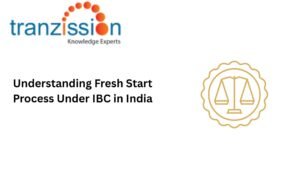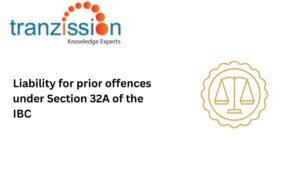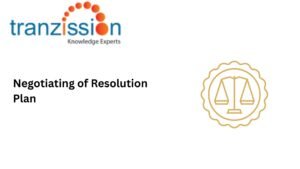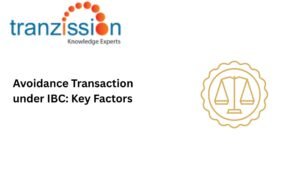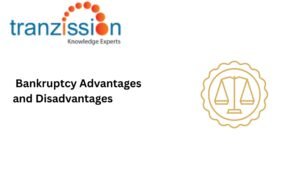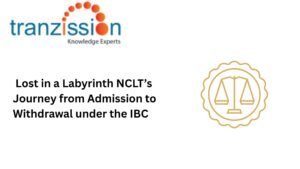
Section 81 of IBC – Insolvency and Bankruptcy Code, 2016
Table of Contents
Companies facing financial distress should be aware of all options available to them under the Insolvency and Bankruptcy Code, 2016 (“the IBC”), to potentially seek relief. Understanding the fresh start process under section 81 of IBC provides individual debtors an opportunity to restructure their debts and start on a clean slate. The introduction of Section 81 of IBC aligns with the broader goals of the IBC, such as ensuring the resolution process is completed within a time-bound manner. It also facilitates the insolvency for all stakeholders, including individuals. Thereby, it encourages economic recovery by providing a second chance to financially distressed individuals.
What is Section 81 of the Insolvency and Bankruptcy Code?
Before going into the advantages and limitations of a fresh start process, it is important to understand section 81 of IBC:
Overview of Section 81 of IBC:
Section 81 of IBC relates to the “Application for a Fresh Start Order”, allowing an individual debtor to file a petition to initiate a process to get a clean slate by discharging their debts under specific conditions. It pauses legal action against them while the application is being processed, known as an ‘interim moratorium’. This section enables an individual debtor to seek a “fresh start” by getting relief from their debts through the insolvency process under the National Company Law Tribunal (NCLT).
Who Can Apply for a Fresh Start Order?
The eligibility criteria for a debtor to submit an application under Section 81 of IBC is listed under section 80(2) of the IBC:
- the gross annual income of the debtor does not exceed Rs. 60,000
- the aggregate value of the debtor’s assets does not exceed Rs. 20,000.
- the aggregate value of the qualifying debts does not exceed Rs. 35,000.
- he is not an undischarged bankrupt.
- he does not own a dwelling unit, irrespective of whether it is encumbered or not
- a fresh start process, insolvency resolution process, or bankruptcy process is not subsisting against him.
- no previous fresh start order under this Chapter has been made in relation to him in the preceding 12 months of the date of the application for a fresh start.
Read more : Role of Blockchain in Insolvency Framework
Key Features of the Fresh Start Process Under Section 81 of IBC
The key features of the fresh start process under the IBC include:
Application Process:
The debtor may apply by himself or through a resolution professional (RP) for a fresh start on his qualifying debts to the NCLT. The application shall contain the following information supported by an affidavit, including the list of debts owed by the debtor, the interest payable on the debts and the rate thereof stipulated in the contract, a list of security held in respect of any of the debts, the financial information of the debtor and his immediate family up to two years prior to the date of the application, the particulars of the debtor’s personal details, the reasons for making the application, the particulars of any legal proceedings which, to the debtor’s knowledge has been commenced against him, and the confirmation that no previous fresh start order under this Chapter has been made in respect of the qualifying debts of the debtor in the preceding twelve months of the date of the application.
Role of the Resolution Professional:
The NCLT directs the Insolvency and Bankruptcy Board of India (IBBI) within 7 days of the date of receiving the application. The RP during the fresh start order has responsibilities such as verifying the application within 10 days of his appointment, submitting a report to the NCLT, and ensuring compliance with eligibility criteria under section 80.
Rights and Duties of the Applicant:
During the interim moratorium period under section 81(2) creditors cannot initiate recovery actions, protecting the NCLT. Under section 88, the duties of the applicant should make all information to the RP, inform the RP of any material error or omission in relation to the information or document supplied to the RP or any change in financial circumstances after the date of application, where such change has an impact on the fresh start process.
Benefits of Section 81 and the Fresh Start Process
This process helps debtors revive their companies by discharging them from their qualifying debts:
Relief for Low-Income Individuals:
The fresh start process under IBC acts as a lifeline for economically vulnerable individuals by allowing them to completely discharge their debts, giving them a “clean slate: to rebuild their business. This process is particularly helpful for individuals who might be trapped in a debt cycle due to unforeseen circumstances, enabling them to re-enter the workforce and contribute to the economy.
Promotes Financial Inclusion:
As per the eligibility criteria under section 80, this mechanism encourages financial inclusion by preventing individuals from being permanently excluded from the credit system.
Simplicity and Accessibility:
The fresh start process under Chapter II of Part III of the IBC is designed to be straightforward, cost-effective, and accessible for individuals with limited resources. This makes it a more viable option for debtors with limited resources in comparison to the corporate insolvency resolution process (CIRP).
Challenges in Implementing Section 81 of IBC
Despite its benefits for individual debtors, there are practical and legal challenges in successfully implementing the fresh start process, including:
Limited Awareness:
Individuals facing financial distress may not be aware of the application under Section 81 of IBC and its advantages. This lack of awareness causes means that debtors do not opt for this process.
Stringent Eligibility Criteria:
Section 80(2) lists the eligibility criteria for individual debts mentioning low thresholds for income, debt, and assets. This limits the applicability of Section 81 of IBC to a small segment of debtors.
Resource Constraints:
The NCLT and the RP appointed face issues regarding the complexity of the valuation of assets, managing large creditors, dealing with incomplete or inaccurate financial information, and ensuring timely resolution.
Stigma Around Debt Relief:
Insolvency law needs to be sensitive to the cultural context of stigma in the context of admission of applications under section 81 of IBC. The social stigma associated with seeking debt relief and how it deters individuals from applying for the fresh start process.
Recommendations to Strengthen the Fresh Start Process
To strengthen the fresh start process under the IBC, key recommendations include:
Expanding Awareness:
Debtors are often unaware of the benefits of a fresh start process. To educate individuals about their rights under Section 81 it is important to establish government-led campaigns on this process.
Read more : Section 7 of IBC – Insolvency and Bankruptcy Code
Revising Eligibility Criteria:
It is recommended to increase the thresholds for income, debt, and assets to expand the scope of the fresh start process. This will encourage debtors to apply for this process under section 81 of IBC.
Streamlining the Application Process:
To simplify the application procedures for fresh start process, it is suggested to develop user-friendly application forms with clear instructions, reduce the documentation and streamline verifications procedures, and establish a dedicated support centre to assist debtors with the application process. Adopting advanced technological tools may also be used to reduce administrative bottlenecks.
Enhancing Institutional Capacity:
The IBBI can introduce training campaigns for RPs on their roles and responsibilities for the fresh start process, and increase NCLT benches to handle applications effectively.
Comparative Analysis: Fresh Start Process in Other Jurisdictions
The US Bankruptcy Code has stricter eligibility criteria than section 81 of the IBC. Debtors need to demonstrate significantly lower income and asset levels to qualify for a fresh start, while section 81 allows for a broader range of debtors to potentially access a fresh start depending on their financial situation, placing more emphasis on debt amount and income thresholds. The creditors also have an opportunity to object to a fresh start application, while under section 81, creditors can only challenge the accuracy of the debt information. The fresh start process under the UK insolvency law refers to the ability of an individual to be discharged from most debts through bankruptcy. This enables them to begin financially anew, with certain restrictions depending on the circumstances of the case. Similar to section 81 of the IBC, the UK provides ‘debt relief orders’, which give relief to low-income individuals.
India can learn from the US bankruptcy code’s fresh start process by adopting a more streamlined and accessible mechanism for small debtors, allowing them to discharge a significant portion of their debt while still maintaining a chance to rebuild their credit. The key difference between a fresh start process under the IBC and the UK is that section 81 has specific eligibility criteria based on income and asset levels, making it target low-income debtors. India insolvency law can adopt the eligibility of the debtor under UK insolvency law, making it more accessible to individuals seeking a fresh start through bankruptcy.
The Way Forward: Enhancing Section 81’s Effectiveness
The potential of section 81 can be used to improve the financial recovery for distressed individuals. There is a need to establish policy reforms and stakeholder collaboration to enhance its accessibility. By strengthening the implementation of section 81, insolvency laws in India can be more inclusive, and contribute to an equitable insolvency framework in India.
Conclusion
The application under section 81 is a significant tool for providing relief to financially distressed individuals through the fresh start process. It puts a temporary hold on all debt-related legal actions against them, giving them a chance to restructure their debts and potentially discharge a portion of their debts. This potentially reduces the amount owed or extends the repayment terms. The interim moratorium shields the debtor from immediate legal actions like debt recovery suits and offers an opportunity to re-organise their finances, and depending on the circumstances of the case and the NCLT’s decision, a debtor may be able to discharge a part of their debts under the fresh start order. However, there is a need for reforms to make it more accessible and impactful.

